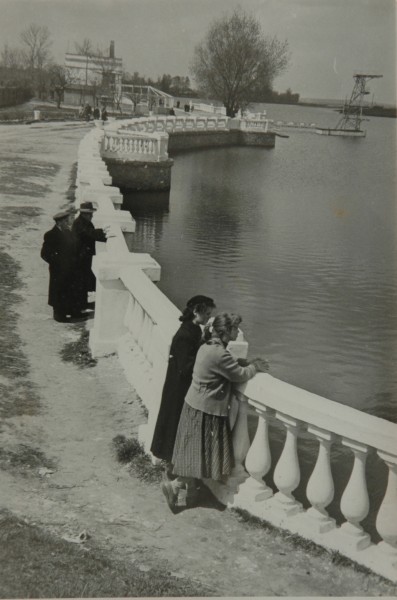The city of Khmelnytskyi grew out of the small village of Ploskyriv (Ploskyrivtsi), the first mention of which dates back to the year 1431. Ploskyriv arose among the swampy floodplains where the Ploska River joined the South Bug River. It is from the Ploska River that our city received its first name.
The settlement was a part of Podolia palatinate and was a royal estate and its ownership was a privilege granted by the crown. In the second half of the 15th century, the owner of Ploskyriv was Kamyanets Castellan Nicholas Svirch also called Bedrykh. In the years 1547-1615 the settlement was owned by the Wlodek family representatives.
The first was Kamyanets Elder Maciej Wlodek, who in the middle of the 16th century built a wooden castle in Ploskyriv and in 1566 Magdeburg Law was given to the settlement. Establishment of the city government had a positive impact on the development of the guild crafts and trade. Maciej's son - Belz governor Stanislaw Wlodek continued his father's work in the development of the city. In 1578 he received from King Stefan Batory the privilege to host three annual fairs and weekly auctions in Ploskyriv. In 1589 he invited to the city the famous Italian architect Bernardo Morando for the construction of city fortifications. Moreover, Ploskyriv became the administrative center of the starostwo (a small administrative unit), which included five surrounding villages.
From the mid-17th century Ploskyriv and the region (starostwo) passed into the possession of the Zamoyski family. During the Ukrainian National Revolution of 1648-1676 and during the occupation of the Ottoman Empire in 1672-1699 the city was devastated, the castle and fortifications destroyed.
In the early 18th century the Zamoyski family gradually revived Ploskyriv. They decided not to renovate the castle and fortifications, instead focusing on the development of economic activity. In the early 17th century they moved farmers from Poland’s Mazovia and Masurian Lake District here. Thus in Ploskyriv and surrounding villages (Zarichchia, Hrechany, and Sharovechka) "Mazurs" appeared whose descendants formed the basis of the Catholic population in the city. Also Jews received privileges to settle in the city and the Zamoyski family gave them rights to develop trade and crafts.
By middle of the 18th century the Ploskyriv population was already 2,500 people. Two annual fairs and weekly auctions took place here, the brewery, two mills and two distilleries operated. Governance was carried out on the basis of Magdeburg Law, and the city government consisted of the elder, who was the Head, two burgomasters, two members of the judicial panel, a clerk, a forester, a river superintendent and a police officer. City officials chose the Zamoyski family coat of arms (the name of the coat of arms is Jelita), as the official seal of the city. The main elements of this seal are used in the present emblem of the City of Khmelnytskyi.
The coat of arms dates back to one of the ancestors of the Zamoyski family – Florian Szary who was a knight of the Polish royal troops. Legend says that in one of the battles in the 14th century Szary was mortally wounded. The king found the knight on the battlefield, badly injured with three spear wounds, but still alive. He decided to reward Szary for courage and bestowed his family an estate and a noble title with the arms of three crossed spears. Over time, the descendants of the knight purchased the town called Zamość and received the family name Zamoyski. In the 18th century the Zamoyski family emblem was used as the emblem of the City of Ploskyriv. Later the spears transformed into arrows, and in this way the emblem of Proskuriv — Khmelnytskyi was established.






